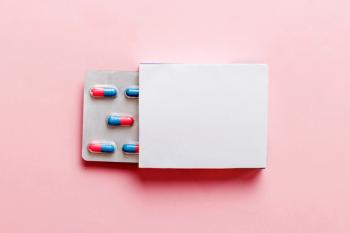
Auto-programming cuts infusion pump errors
Auto-programming infusion pumps reduces keystroke error and increases patient safety.
Intravenous medications and IV infusion pumps are lifesavers. They are also life-takers. Medication administration errors involving infusion pumps are among the top technology hazards in hospitals today. The Food and Drug Administration has received reports of more than 700 patient deaths linked to infusion pumps over the past five years.
The problem is the ways pumps are programmed and used, said Thomas Richter, PharmD, Pharmacy IT Manager, Oklahoma Heart Hospital, Oklahoma City, Okla. Most hospitals use pumps that require manual programming, and every keystroke is a potential medication error.
“We wanted to take as many of these keystroke error points out of the system as possible,” Richter said. “Any time you can get fingers and manual programming out and substitute automation, you are getting safer.”
In Minneapolis, N. Jeffery Fleming, PharmD, IT and clinical pharmacist at Children’s Hospitals and Clinics of Minnesota, viewed automated pump programming as a safety net. Eliminating manual programming could reduce opportunity for error and provide real-time documentation of medication administration.
There was just one problem. Automated pump programming was more concept than reality.
Two testing sites
Oklahoma Heart and Children’s Hospitals agreed to serve as alpha sites to develop, test, and launch an automated pump programming system with Cerner and CareFusion, its EMR and pump providers. “We eliminated 18 keystrokes by implementing auto-programming,” Fleming said. “Instead of keying in patient, medication, and infusion parameters, the nurse scans the patient, pump, and medication, verifies the data, and presses the start button. We have improved patient safety and medication administration with real-time documentation for our providers.”
Extra layer of safety
Richter reported similar improvements. The GuardRails system built into Alaris pumps provides a safety oversight of manual programming, but nurses can - and do - override most alerts. Auto-pump programming provides an extra layer of safety by eliminating nearly all keystroke errors.
A green-yellow-red alert system helps focus attention on potential problem areas. A green screen means an exact match between the EMR and pump on continuous fluids. A yellow screen means an exact match between EMR and pump on a titratable infusion. A red screen means a mismatch between EMR and pump that needs to be checked.
“We are trying to make this system more intuitive and streamlined,” Richter said. “Nurses like systems that work. If it doesn’t work, they tend not to use it. And the data show that they are using the auto system. We are seeing dramatic increase in patient armband scanning and dramatic drops in overrides as fewer orders are outside guidelines with the auto-programming. It’s reducing patient risk significantly.”
Investments in the future
Both Children’s and Oklahoma Heart hospitals have made significant investments in the auto-program system. Because nearly all pediatric fluids are compounded, Children’s had to expand its library to accept multiple ingredients. Oklahoma Heart had to build adjustments for multiple bags on the same infusion. And both institutions had to enhance wireless connectivity to ensure smooth operations.
Both Fleming and Richter are expanding auto-programming. One of Children’s two hospitals now has auto-programming in most patient-care areas, Fleming said. The second hospital is scheduled to go live in April. Manual programming still rules the emergency department, operating rooms, and cath lab.
Oklahoma Heart has yet to expand auto-programming to its cath lab and operating rooms. The cath lab has a different EMR, so auto-programming parameters are not available. And OR providers typically start fluids as needed, then chart the orders after surgery, a workflow that evades EMR surveillance and pre-infusion safety checks.
“We continue to expand our drug library and add infusion management,” Richter said. “We will have a pharmacy dashboard that tracks every pump running in the hospital, color-coded by the state of the infusion. Every nursing station will have its own dashboard. Our goal is to proceed to 100% auto-programming.”
Fred Gebhart is a medical writer based in San Francisco.
Newsletter
Pharmacy practice is always changing. Stay ahead of the curve with the Drug Topics newsletter and get the latest drug information, industry trends, and patient care tips.













































































































































